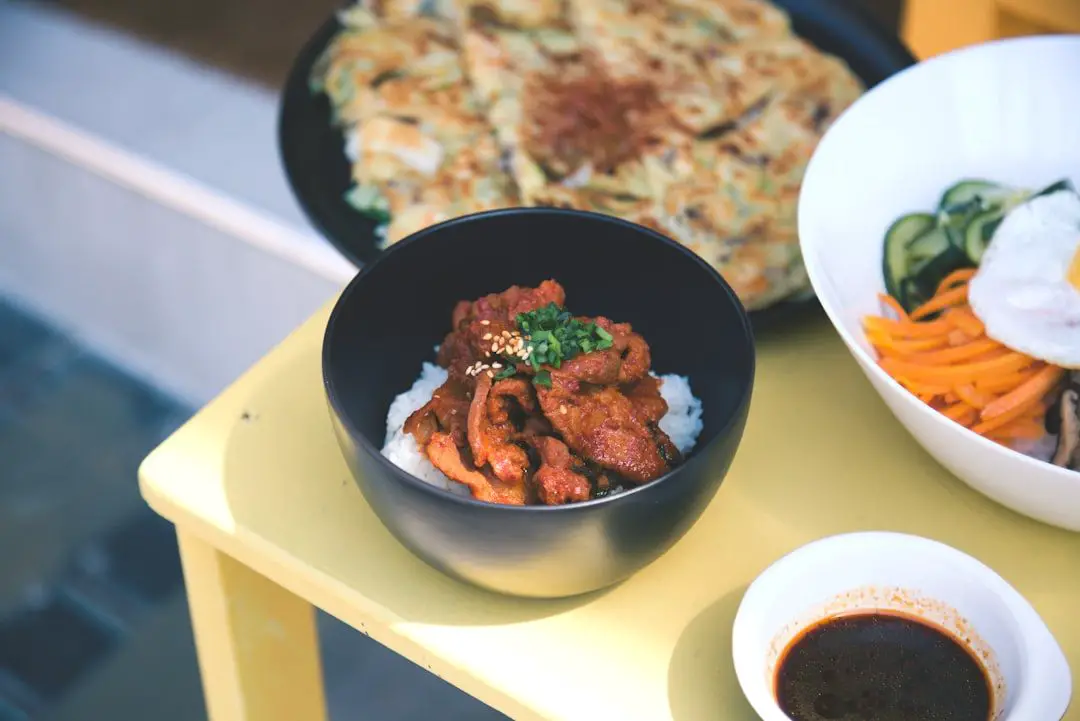
Spices have been an integral part of human civilization for thousands of years. They have played a significant role in shaping culinary traditions and adding depth and flavor to dishes from all around the world. The history of spices dates back to ancient times, when they were highly prized and sought after for their medicinal properties, as well as their ability to enhance the taste of food.
Spices are derived from various parts of plants, such as seeds, bark, roots, and fruits. They come in a wide range of flavors, colors, and aromas, making them an essential ingredient in many cuisines. Some of the most commonly used spices include cinnamon, cumin, paprika, turmeric, ginger, and garlic.
Key Takeaways
- Spices are an essential part of cooking and can enhance the flavor of any dish.
- Using spices can also provide health benefits, such as reducing inflammation and boosting immunity.
- The top 10 spices every cook should have in their pantry include cinnamon, cumin, paprika, turmeric, ginger, and garlic.
- Cinnamon is a versatile spice that can be used in both sweet and savory dishes.
- Cumin, paprika, turmeric, ginger, and garlic each have unique flavors that are commonly used in Middle Eastern, Indian, Hungarian, Spanish, Asian, and Caribbean cuisine.
The Role of Spices in Flavorful Cooking
Spices are not just used for their taste; they also play a crucial role in enhancing the overall flavor profile of a dish. When used correctly, spices can elevate a simple meal to new heights by adding complexity and depth. The science behind flavor pairing explains how certain spices work together to create a harmonious blend of flavors.
For example, cinnamon and nutmeg are often paired together in sweet dishes because they complement each other’s warm and aromatic qualities. Similarly, cumin and coriander are commonly used together in Indian cuisine to create a rich and earthy flavor base. Understanding these flavor pairings can help cooks create well-balanced and delicious meals.
Popular spice blends, such as garam masala, curry powder, and chili powder, are also widely used in various cuisines. These blends consist of a combination of different spices that work together to create a unique flavor profile. Garam masala, for instance, is a blend of spices commonly used in Indian cooking and typically includes cinnamon, cardamom, cloves, cumin, coriander, and black pepper.
The Health Benefits of Using Spices
In addition to their culinary uses, spices also offer a range of health benefits. Many spices are rich in antioxidants, which help protect the body against free radicals and oxidative stress. They also have anti-inflammatory properties, which can help reduce inflammation in the body and promote overall health.
Spices can also aid in digestion and metabolism. For example, ginger has long been used as a natural remedy for digestive issues such as nausea and indigestion. Turmeric, on the other hand, has been shown to support liver function and improve digestion.
Certain spices have specific health benefits. For instance, cinnamon has been found to help regulate blood sugar levels and improve insulin sensitivity, making it beneficial for individuals with diabetes. Turmeric has been studied extensively for its anti-cancer properties, thanks to its active compound called curcumin.
The Top 10 Spices Every Cook Should Have in Their Pantry
| Spice | Flavor Profile | Common Dishes | Health Benefits |
|---|---|---|---|
| Cumin | Earthy, nutty, warm | Chili, curry, tacos | May aid digestion, anti-inflammatory |
| Paprika | Sweet, smoky, mild | Goulash, roasted meats, deviled eggs | Rich in antioxidants, anti-inflammatory |
| Cinnamon | Sweet, warm, spicy | Baked goods, oatmeal, chai tea | May lower blood sugar, anti-inflammatory |
| Ginger | Spicy, pungent, warm | Stir-fries, marinades, tea | May aid digestion, anti-inflammatory |
| Turmeric | Earthy, slightly bitter, warm | Curry, rice dishes, smoothies | Rich in antioxidants, anti-inflammatory |
| Garlic | Pungent, savory, slightly sweet | Pasta, roasted vegetables, marinades | May boost immune system, anti-inflammatory |
| Black Pepper | Pungent, spicy, slightly sweet | Steak, roasted vegetables, eggs | May aid digestion, anti-inflammatory |
| Coriander | Earthy, citrusy, slightly sweet | Curry, roasted vegetables, marinades | May aid digestion, anti-inflammatory |
| Bay Leaves | Earthy, slightly sweet, herbal | Stews, soups, braised meats | May aid digestion, anti-inflammatory |
| Thyme | Earthy, slightly sweet, herbal | Roasted meats, soups, stews | May boost immune system, anti-inflammatory |
When it comes to selecting essential spices for your pantry, there are a few criteria to consider. First and foremost, choose spices that you enjoy using and that complement your cooking style. It’s also important to consider the versatility of the spice and how well it pairs with other ingredients.
Here is a list of the top 10 spices every cook should have in their pantry:
1. Cinnamon: This versatile spice is perfect for both sweet and savory dishes. It adds warmth and depth to baked goods, oatmeal, and curries.
2. Cumin: Known for its earthy flavor, cumin is a staple in Middle Eastern and Indian cuisine. It pairs well with beans, rice, and roasted vegetables.
3. Paprika: This bold spice adds a vibrant red color and smoky flavor to dishes. It is commonly used in Hungarian goulash and Spanish paella.
4. Turmeric: With its vibrant golden color, turmeric is not only visually appealing but also offers numerous health benefits. It is commonly used in curries and rice dishes.
5. Ginger: This zesty spice adds a unique flavor to Asian and Caribbean dishes. It pairs well with seafood, stir-fries, and marinades.
6. Garlic: Known for its pungent aroma and robust flavor, garlic is a staple in many cuisines. It can be used in almost any savory dish, from pasta sauces to roasted meats.
7. Black Pepper: This versatile spice adds a subtle heat and depth of flavor to dishes. It is commonly used in marinades, salad dressings, and soups.
8. Chili Powder: Made from ground chili peppers, this spice adds heat and complexity to dishes. It is commonly used in Mexican and Tex-Mex cuisine.
9. Coriander: This herbaceous spice adds a fresh and citrusy flavor to dishes. It pairs well with roasted vegetables, grilled meats, and curries.
10. Oregano: This aromatic herb is commonly used in Italian and Mediterranean cuisine. It adds a savory and slightly bitter flavor to dishes like pizza and pasta sauces.
When storing spices, it’s important to keep them in a cool, dark place away from direct sunlight and moisture. This will help preserve their flavor and potency. It’s also a good idea to label your spices with the date of purchase to ensure freshness.
Cinnamon: The Versatile Spice for Sweet and Savory Dishes
Cinnamon is one of the most popular spices in the world, known for its warm and sweet flavor. It has a long history that dates back thousands of years, with origins in Sri Lanka and other parts of Southeast Asia. Cinnamon is derived from the bark of the cinnamon tree and comes in two main varieties: Ceylon cinnamon (true cinnamon) and cassia cinnamon (common cinnamon).
Ceylon cinnamon has a delicate and slightly sweet flavor, making it ideal for sweet dishes like cinnamon rolls, apple pie, and hot chocolate. Cassia cinnamon, on the other hand, has a stronger and more intense flavor, which makes it perfect for savory dishes like curries, stews, and roasted meats.
Cinnamon can be used in a variety of ways in both sweet and savory dishes. In addition to its flavor, cinnamon also offers several health benefits. It has been shown to help regulate blood sugar levels, reduce inflammation, and improve brain function.
Here are a few recipes featuring cinnamon:
1. Cinnamon Apple Crisp: This classic dessert combines the flavors of cinnamon and apples for a warm and comforting treat. Simply toss sliced apples with cinnamon, sugar, and a touch of lemon juice, then top with a crumbly oat topping and bake until golden brown.
2. Moroccan Lamb Tagine: This slow-cooked stew features tender lamb simmered with aromatic spices, including cinnamon. The cinnamon adds a subtle sweetness to the dish and pairs well with the savory flavors of the meat and vegetables.
3. Cinnamon Spiced Coffee: Add a pinch of cinnamon to your morning coffee for an extra burst of flavor. Simply sprinkle some ground cinnamon into your coffee grounds before brewing for a deliciously spiced cup of joe.
Cumin: The Earthy Spice for Middle Eastern and Indian Cuisine

Cumin is an earthy spice that is widely used in Middle Eastern and Indian cooking. It has a warm and slightly bitter flavor that adds depth to dishes like curries, stews, and roasted vegetables. Cumin is derived from the seeds of the cumin plant, which is native to the Mediterranean region.
Cumin is an essential ingredient in many spice blends, such as garam masala and curry powder. It pairs well with other spices like coriander, turmeric, and chili powder to create complex and flavorful dishes. In addition to its flavor, cumin also offers several health benefits. It has been shown to aid in digestion, improve blood cholesterol levels, and boost the immune system.
Here are a few recipes featuring cumin:
1. Chicken Shawarma: This Middle Eastern dish features marinated chicken that is grilled to perfection and served with a tangy yogurt sauce. Cumin is one of the key spices in the marinade, adding a warm and earthy flavor to the chicken.
2. Chana Masala: This classic Indian dish consists of chickpeas cooked in a flavorful tomato-based sauce. Cumin is one of the main spices used in the dish, along with coriander, turmeric, and garam masala.
3. Roasted Carrots with Cumin: This simple side dish is packed with flavor thanks to the addition of cumin. Simply toss carrots with olive oil, cumin, salt, and pepper, then roast until tender and caramelized.
Paprika: The Bold Spice for Hungarian and Spanish Dishes
Paprika is a bold and vibrant spice that is commonly used in Hungarian and Spanish cuisine. It is made from ground dried peppers and comes in various types, including sweet, hot, and smoked. Paprika adds a rich red color and smoky flavor to dishes like goulash, paella, and chorizo.
The history of paprika can be traced back to the New World, where peppers were first cultivated by indigenous peoples. The spice made its way to Europe in the 16th century and quickly became popular in Hungarian and Spanish cooking.
There are several types of paprika available, each with its own unique flavor profile. Sweet paprika has a mild and slightly sweet flavor, making it ideal for dishes that require a subtle heat. Hot paprika, on the other hand, has a more intense heat that adds a fiery kick to dishes. Smoked paprika, also known as pimentón, has a smoky flavor that pairs well with grilled meats and roasted vegetables.
Here are a few recipes featuring paprika:
1. Hungarian Goulash: This hearty stew features tender beef simmered with onions, tomatoes, and paprika. The paprika adds a rich and smoky flavor to the dish, which is traditionally served with egg noodles or crusty bread.
2. Spanish Paella: This iconic Spanish dish is made with saffron-infused rice, seafood, and a variety of vegetables. Smoked paprika is one of the key spices used in the dish, adding a smoky and savory flavor to the rice.
3. Paprika Roasted Potatoes: This simple side dish is packed with flavor thanks to the addition of paprika. Simply toss potatoes with olive oil, paprika, salt, and pepper, then roast until crispy and golden brown.
Turmeric: The Golden Spice for Health and Vibrant Color
Turmeric is a golden spice that is known for its vibrant color and numerous health benefits. It has a warm and slightly bitter flavor that adds depth to dishes like curries, rice dishes, and soups. Turmeric is derived from the root of the turmeric plant, which is native to Southeast Asia.
Turmeric contains a compound called curcumin, which has been shown to have powerful antioxidant and anti-inflammatory properties. It has been used for centuries in traditional Ayurvedic medicine to treat various ailments. In recent years, turmeric has gained popularity for its potential health benefits, including reducing inflammation, improving brain function, and supporting heart health.
In addition to its health benefits, turmeric also adds a vibrant yellow color to dishes. It is commonly used in curries and rice dishes to give them a rich and vibrant hue.
Here are a few recipes featuring turmeric:
1. Golden Milk Latte: This warm and comforting drink is made with turmeric, ginger, cinnamon, and milk. It is often enjoyed as a soothing beverage before bed or as a natural remedy for cold and flu symptoms.
2. Turmeric Roasted Cauliflower: This simple side dish is packed with flavor and color thanks to the addition of turmeric. Simply toss cauliflower florets with olive oil, turmeric, salt, and pepper, then roast until tender and golden brown.
3. Turmeric Chicken Curry: This classic Indian dish features tender chicken simmered in a flavorful curry sauce. Turmeric is one of the key spices used in the curry paste, adding a vibrant color and earthy flavor to the dish.
Ginger: The Zesty Spice for Asian and Caribbean Cooking
Ginger is a zesty spice that is widely used in Asian and Caribbean cuisine. It has a warm and slightly spicy flavor that adds depth to dishes like stir-fries, curries, and marinades. Ginger is derived from the root of the ginger plant, which is native to Southeast Asia.
Ginger has been used for centuries in traditional medicine to treat various ailments, including nausea, indigestion, and inflammation. It contains several bioactive compounds that have been shown to have anti-inflammatory and antioxidant properties.
In addition to its health benefits, ginger also adds a unique flavor to dishes. It pairs well with other spices like garlic, soy sauce, and chili peppers to create complex and flavorful dishes.
Here are a few recipes featuring ginger:
1. Ginger Soy Glazed Salmon: This simple yet flavorful dish features salmon fillets marinated in a mixture of ginger, soy sauce, honey, and garlic. The ginger adds a zesty and aromatic flavor to the fish.
2. Thai Red Curry with Ginger: This spicy curry features tender chicken or tofu simmered in a fragrant red curry sauce. Ginger is one of the key spices used in the curry paste, adding a zesty and slightly spicy flavor to the dish.
3. Ginger Pineapple Smoothie: This refreshing smoothie is made with fresh ginger, pineapple, spinach, and coconut milk. It is a great way to start your day or as a post-workout snack.
Garlic: The Pungent Spice for Robust Flavors in Any Dish
Garlic is a pungent spice that is used in various cuisines around the world. It has a strong and distinctive flavor that adds depth to dishes like pasta sauces, marinades, and roasted meats. Garlic is derived from the bulb of the garlic plant, which is native to Central Asia.
Garlic has been used for centuries for its medicinal properties. It contains several sulfur compounds that have been shown to have antibacterial, antiviral, and antifungal properties. Garlic is also rich in antioxidants, which help protect the body against free radicals and oxidative stress.
In addition to its health benefits, garlic adds a robust flavor to dishes. It pairs well with other spices like oregano, basil, and chili flakes to create flavorful and aromatic dishes.
Here are a few recipes featuring garlic:
1. Garlic Butter Shrimp: This simple yet flavorful dish features shrimp sautéed in a garlic butter sauce. The garlic adds a pungent and savory flavor to the shrimp.
2. Spaghetti Aglio e Olio: This classic Italian dish features spaghetti tossed with garlic, olive oil, chili flakes, and parsley. The garlic-infused oil adds a rich and flavorful base to the pasta, while the chili flakes provide a subtle heat. The parsley adds a fresh and vibrant touch, balancing out the richness of the oil. This simple yet delicious dish is perfect for those looking for a quick and easy meal that still packs a punch of flavor. Whether enjoyed as a main course or a side dish, Spaghetti Aglio e Olio is sure to satisfy any pasta lover’s cravings.
Looking to spice up your culinary adventures? Check out this article on the best spices to elevate your dishes to new heights. From aromatic cinnamon to fiery cayenne pepper, these essential seasonings will add depth and flavor to any recipe. But why stop there? Discover how to create the perfect Pina Colada with this quick and easy recipe, or learn about the delightful Dagen Sugar Plum and its unique taste profile. And if you’re looking for a versatile ingredient that goes beyond salads, don’t miss the article on the Armenian Cucumber. Click here to explore these flavorful sips and take your cooking skills to the next level: https://flavorfulsips.com/best-spices-to-elevate-your-dishes/.



